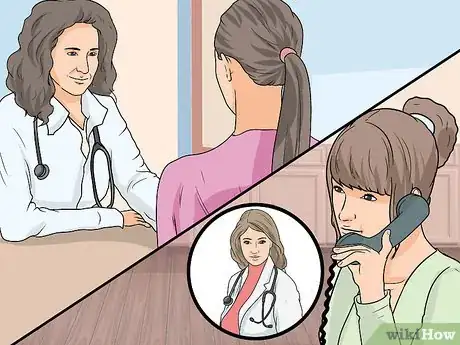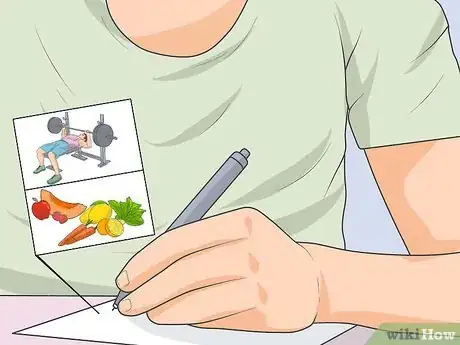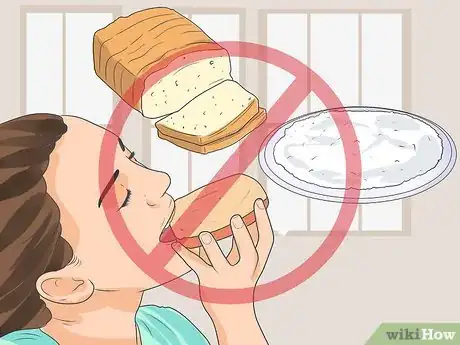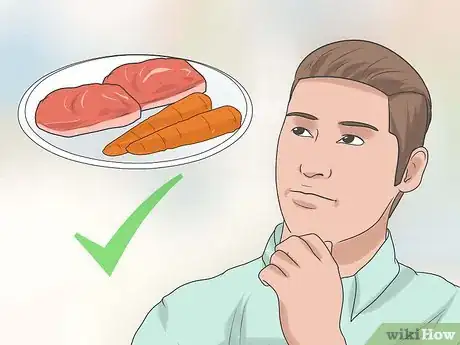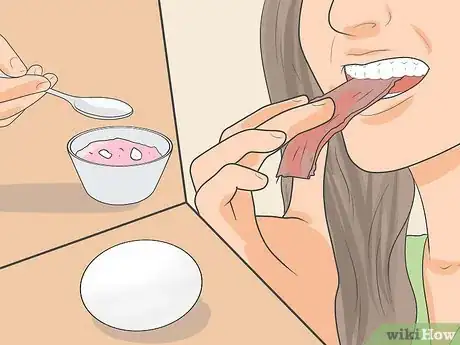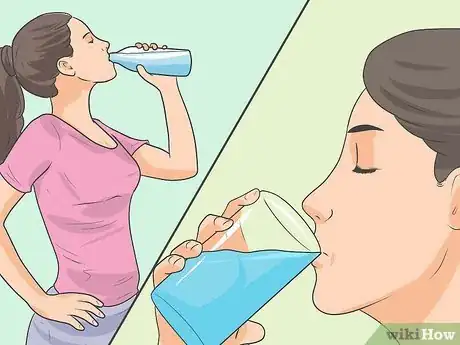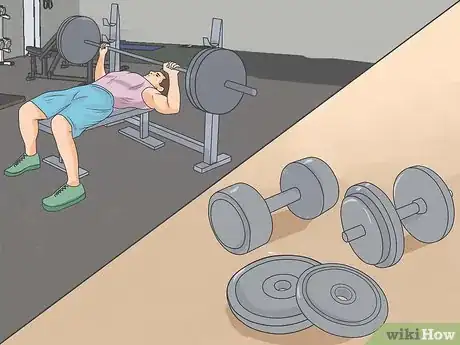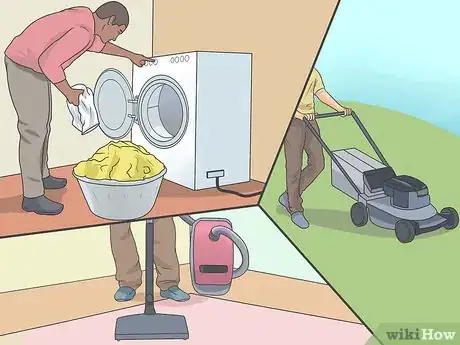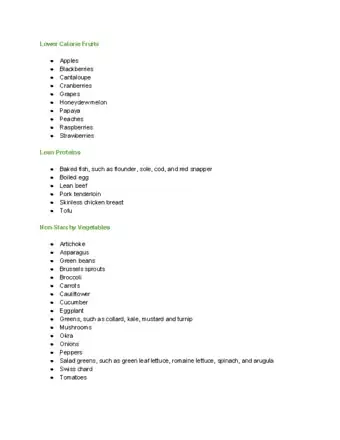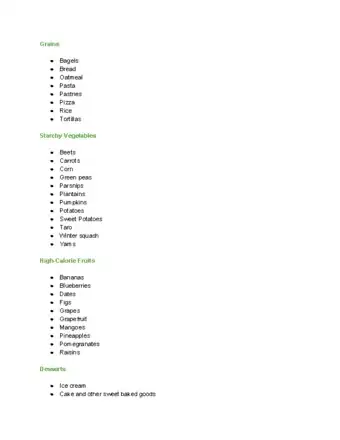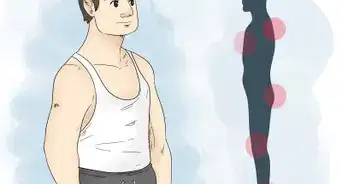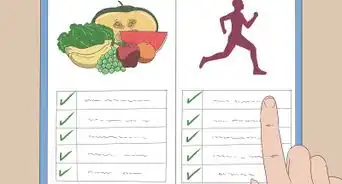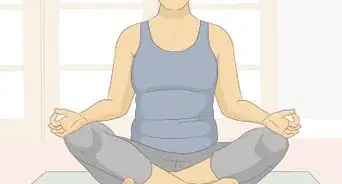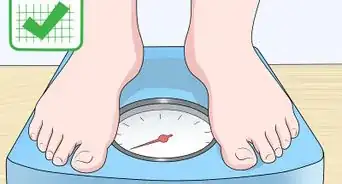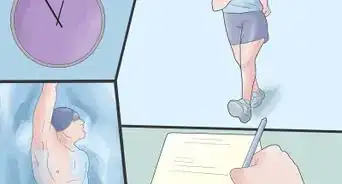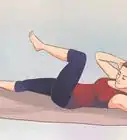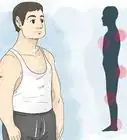This article was co-authored by Kristi Major. Kristi Major is an ACE (American Council on Exercise) certified Personal Trainer based in the San Francisco Bay Area. Kristi has over 18 years of personal training experience and more than 90 hours of recertification study in fitness, health, nutrition, and supplementation. She is CPR and AED certified from the American Heart Association and she has a BA in Television Broadcasting.
There are 18 references cited in this article, which can be found at the bottom of the page.
wikiHow marks an article as reader-approved once it receives enough positive feedback. In this case, 84% of readers who voted found the article helpful, earning it our reader-approved status.
This article has been viewed 1,840,680 times.
Lots of diets promise to help you to lose weight quickly, but the truth is that studies have shown that 95% of diets fail and lost weight is often gained back in just a year. [1] Such diets can also be torturous and leave your body feeling weak and fatigued. If you want to lose weight and really keep it off, you need to make adjustments to how you live.
Steps
Getting Ready to Lose 25 Pounds
-
1Talk to your doctor. Losing 25 pounds in two months is a lofty goal. Due to the type of diet and exercise plan this type of weight loss requires, it's going to be a smart idea to talk to your doctor prior to starting your weight loss.
- A low-calorie diet paired with a lot of exercise is generally safe for most people; however, talk to your doctor about exactly what type of diet and exercise you plan on doing. They will be able to tell you whether or not this is safe for your current health conditions.
- Speak to a registered dietitian. These nutrition professionals will be able to guide you on an appropriate eating pattern to meet your goal. They may be able to give you an specific meal plan, types of foods to include and what to avoid.
- Discuss with your doctor whether this is truly an attainable goal. Someone who is 50 pounds overweight might be able to lose 25 pounds in two months, but someone who is 20 pounds overweight cannot. It is unrealistic for most people who are overweight (as in BMI over 25 but under 29) to lose 25 pounds in two months.
- In addition if you are obese (BMI over 30), it may be difficult for you to incorporate the exercise necessary for such a diet. Running, jogging, aerobics, and exercise that requires major exertion may cause too much discomfort for someone who is obese.
- In addition, you need to discuss the risk of yo-yo dieting. Rapidly losing weight only to put it back on causes some major health risks, and is actually considered quite dangerous. You can put yourself at risk for heart disease, cancer and diabetes; damage to arteries; less energy; muscle wasting; and higher levels of body fat.
-
2Start a journal. Starting a journal will be a good tool for your diet and exercise program. Use a pen and paper journal or a smartphone app to track a variety of factors that will help you monitor your progress.
- Log everything you eat in your journal. This will help you stay accountable but also provide you with good information if you're not seeing your desired results, as you can look back and see where you can possibly reduce more calories.[2]
- Consider tracking your exercise as well. Again, this can help keep you on track and help you calculate how many calories you are burning.
- Lastly, keep track of your progress. This may mean your weight loss or measurements. If you're not seeing your results, you may need to go back and analyze your food and exercise journal.
Advertisement -
3Build a support group. Losing 25 pounds in two months will be difficult. You'll need to make a variety of changes to your diet and lifestyle. These changes may be difficult to maintain every day for two months. A support group can help you stay strong the entire two months.[3]
- Find friends, family members or co-workers that will be positive support. Look for people that will help you stay on track. Some people may not encourage you through your tough moments and should not be included in your support group.[4]
- Also ask if anyone wants to join you on your new plan. Losing weight and getting in shape is a common goal and finding a friend to go along with you makes the journey more fun.
- You can also check out online support groups or forums of others trying to lose weight. This may allow you to connect with other people any time of day.
-
4Write your diet and exercise plan. To keep yourself organized and on track, take the time to write up your desired diet and exercise plan. These blueprints will answer all your questions of how you're going to lose 25 pounds in two months.
- Start with your diet plan. To lose that 25 pounds, you'll need to make the most changes to your diet. You'll also need to be the most strict with your diet. Diet has the greatest effect on your weight loss.[5]
- Write out your calorie level for each day. Then construct a meal plan that fits into that calorie plan. Include each meal, snack and beverage you plan on consuming throughout the day.[6]
- Write down what type of exercise you're going to be doing, how much to aim for each week and how you're going to divide that up between seven days.
Managing Your Diet
-
1Cut calories. To lose weight, you'll need to modify your diet by cutting down on the total amount of calories you eat each day. To lose 25 pounds in two months, you'll need to cut out a significant amount of calories each day.
- In general, safe weight loss is considered to be about 1 – 2 pounds of weight loss each week.[7] To lose 25 pounds in two months you'll need to lose about three pounds per week. Although this is technically outside of the "safe weight loss" limit, it may be a realistic goal for those who stick to a strict diet plan the entire two months.[8]
- You'll need to cut out at least 750 calories daily. One pound is equivalent to 3,500 calories, so you'll need to lose 87,500 (3,500 x 25) over 60 days. To achieve this goal, you will need to lose 1,458.3 calories per day.
- Although you'll need to cut out a significant amount of calories each day, it's not typically recommended by health professionals to eat less than 1,200 calories daily. A calorie level lower than this may not allow you to consume enough vital nutrients that your body needs to function normally each day.
- In addition, consistently following a calorie limit that is too low may result in the loss of lean muscle mass, not fat mass. It may slow down your metabolism and cause your body to actually cling to the fat instead of shedding it, because your body will enter "starvation mode."
-
2Pass on the carbs. Many studies show that one of the dieting plans that results in the fastest weight loss is a low-carb diet. These diets not only help you lose weight faster, but typically result in the loss of more fat mass compared to lean muscle mass.[9]
- Carbs are found in a variety of foods including: starchy vegetables (like potatoes or peas), legumes (beans and lentils), fruits, dairy products and grains.
- Because carbohydrates are so widespread through a variety of food groups, it's not ideal or realistic to cut out each of those food groups. Focus on minimizing the most carbohydrate-rich food groups like grains, starchy vegetables and some fruits.
- Many nutrients found in foods like grains or starchy vegetables are easily consumed from other food groups. Limiting these for a short time period like two months isn't considered unhealthy.
- Although fruit is a carbohydrate-rich food, you should not avoid all fruit. Choose to have minimal, small amounts of fruit each week. Also choose lower-sugar fruits like: cranberries, raspberries, blackberries and strawberries.[10]
- Also keep fruit to the appropriate serving size of 1/2 cup chopped or small fruit or one small piece.[11]
-
3Fill up on lean protein and non-starchy vegetables. If you're following a low-carb diet, there are two food groups that are left that are considered low-carb. Protein and non-starchy vegetables are low-carb, low-calories and nutrient-dense, making them an excellent pair for rapid weight loss.
- Aim for one to two servings of lean protein at each meal or snack. One serving is about 3 – 4 oz or about the size of a deck of cards.[12]
- Fill up on as many non-starchy vegetables as you'd like. It's typically recommended to make 1/2 of your plate a vegetable.[13]
- In general, you may notice that half of your plate is a source of lean protein and half is a non-starchy vegetable and the occasional piece of fruit.
-
4Limit snacks and keep them low-calorie. When you're cutting a significant amount of calories from your diet each day and participating in a higher amount of physical activity, there is a chance that you'll feel more hungry or need an extra boost throughout the day. Planning healthy, weight-loss-friendly snacks is a must.
- If you're trying to follow a more rapid weight loss plan, you'll need to make sure that your snacks fit into your daily calorie goal. Typically a snack of 100 – 150 calories will work well in your plan.[14]
- Try to stick to one snack daily. Including two or more might put you over your daily calorie goal.
- To fit in with your high-protein, low-carb diet, choose snacks that also feature higher protein amounts.
- Examples of low-calorie, low-carb snacks include: 1/4 cup of almonds, 1/2 cup plain low-fat greek yogurt, 3 oz of beef jerky or one hard boiled egg.
- Also, only snack if you're feeling truly hungry or need a boost for a workout. If you snack unnecessarily that may lead to slower weight loss or a plateau.
-
5Drink adequate fluid. Drinking enough hydrating fluids each day is essential for overall health. It'll also become even more important with rapid weight loss and higher amounts of physical activity.[15]
- When you're losing weight, especially when paired with higher intensity or higher amounts of cardio, you'll need to make sure that you're drinking enough to rehydrate after workouts and stay hydrated throughout the day.[16]
- Aim for a minimum of eight glasses daily or about 64 oz (1.9 L); however, if you're including more physical activity you may need to drink up to 13 glasses daily. This will depend on your exercise, gender and age as well.[17]
- Stick to low- or no-calorie fluids to help you meet your daily calorie goal. Beverages like water, flavored water, decaf coffee and tea are the best choices.
Adding in Physical Activity
-
1Do enough cardio exercise. Although exercise is not responsible for a large part of weight loss, when you have a lofty weight loss goal, you'll need to really increase the amount of cardio exercise you do each day.[18]
- Cardio or aerobic activity is the type of exercise that's responsible for larger calorie burns compared to strength training.
- Most health professionals recommend including at least 150 minutes of cardio exercises each week;[19] however, because losing 25 pounds in two months is considered a rapid weight loss, you'll need to add in additional activity to help you reach your goal.
- Consider doing at least 300 minutes of cardio each week. This is a lot of exercise, but will really burn additional calories to help you lose weight more quickly.[20]
- Include exercises like: jogging/running, swimming, using the elliptical, aerobics classes, cycling or doing spin class.
-
2Include regular strength training. Strength training or resistance training does not burn many calories per session; however, it is important component of overall exercise.
- Strength training helps build and support lean muscle mass during weight loss. In addition, the more lean muscle mass you have, the more calories you'll burn at rest, meaning you'll be burning more calories overall.
- Most health experts recommend including at least two to three days of strength training each week. Work each major muscle group in your body each day you do strength work.[21]
- If you're having difficulty meeting the 150 – 300 minutes of cardio each week, cut down on the amount of time you spend doing strength training. In the short-term of two months, you'll benefit more from doing higher amounts of cardio.[22]
-
3Increase your baseline activity. Lifestyle or baseline activity are the types of exercise that you include in your everyday life. These types of activities do not burn many calories by themselves, but added up at the end of the day, they can have a significant effect on the total amount of calories you've burned.[23]
- Lifestyle activities include things like: doing household chores, gardening, walking to and from your car, walking throughout the day and taking the stairs.
- Spend some time when you're coming up with your exercise plan to add in ways you can be more active throughout the day or just move more.
- For example, can you park farther away when you're at the store or at work? Are there ways you can take the stairs instead of the elevator? Can you stand or move more while you're watching TV?
-
4Consider HIIT. A more trendy form of exercise is called HIIT or high-intensity interval training. This type of exercise burns a lot of calories in a short amount of time and can help you reach your weight goal.
- HIIT is a form of exercise that combines bouts of very high-intensity cardio activities with short bouts of more moderate-intensity activities. HIIT sessions are usually shorter compared to more steady cardio (like going for a 45 minute jog).[24]
- Although HIIT sessions are shorter, they burn higher amount of calories compared to steady cardio. In addition, studies have shown that they keep your metabolism (your body's calorie burner) raised long after the workout has been completed.[25]
- In addition to your regular cardio and strength training, consider adding one to two sessions of HIIT throughout the week. This extra calorie burn can help you reach that 25 pound goal in two months.
Foods to Eat and Avoid and Exercises to Lose Weight
Expert Q&A
Did you know you can get expert answers for this article?
Unlock expert answers by supporting wikiHow
-
QuestionIs it possible to lose 25 pounds in 2 months?
 Kristi MajorKristi Major is an ACE (American Council on Exercise) certified Personal Trainer based in the San Francisco Bay Area. Kristi has over 18 years of personal training experience and more than 90 hours of recertification study in fitness, health, nutrition, and supplementation. She is CPR and AED certified from the American Heart Association and she has a BA in Television Broadcasting.
Kristi MajorKristi Major is an ACE (American Council on Exercise) certified Personal Trainer based in the San Francisco Bay Area. Kristi has over 18 years of personal training experience and more than 90 hours of recertification study in fitness, health, nutrition, and supplementation. She is CPR and AED certified from the American Heart Association and she has a BA in Television Broadcasting.
ACE Certified Personal Trainer
-
QuestionDoes a lemon honey drink help me lose weight?
 Michele DolanMichele Dolan is a BCRPA certified Personal Trainer in British Columbia. She has been a personal trainer and fitness instructor since 2002.
Michele DolanMichele Dolan is a BCRPA certified Personal Trainer in British Columbia. She has been a personal trainer and fitness instructor since 2002.
Certified Fitness Trainer
-
QuestionIf my weight is low, could it cause my period to stop?
 Michele DolanMichele Dolan is a BCRPA certified Personal Trainer in British Columbia. She has been a personal trainer and fitness instructor since 2002.
Michele DolanMichele Dolan is a BCRPA certified Personal Trainer in British Columbia. She has been a personal trainer and fitness instructor since 2002.
Certified Fitness Trainer
Warnings
- Quick weight loss results in rapid return of the weight in the majority of cases. To keep the weight off, people must maintain the eating and exercise strategies employed to lose the weight in the first place. That is why rapid weight loss is not recommended — it is not sustainable in the long-term.⧼thumbs_response⧽
References
- ↑ http://www.sciencedaily.com/releases/2007/04/070404162428.htm
- ↑ http://health.usnews.com/health-news/family-health/articles/2008/07/08/4-ways-a-food-diary-can-help-you-lose-weight
- ↑ http://www.apa.org/topics/obesity/support.aspx
- ↑ http://www.apa.org/topics/obesity/support.aspx
- ↑ http://www.nytimes.com/2015/06/16/upshot/to-lose-weight-eating-less-is-far-more-important-than-exercising-more.html?_r=0
- ↑ http://www.mayoclinic.org/healthy-lifestyle/nutrition-and-healthy-eating/in-depth/menu-planning/art-20048199
- ↑ http://www.mayoclinic.org/healthy-lifestyle/weight-loss/in-depth/weight-loss/art-20047752
- ↑ Kristi Major. ACE Certified Personal Trainer. Expert Interview. 28 October 2019.
- ↑ http://www.mayoclinic.org/healthy-lifestyle/weight-loss/in-depth/low-carb-diet/art-20045831
- ↑ http://www.womenshealthmag.com/food/high-low-sugar-fruits?slide=11
- ↑ http://www.choosemyplate.gov/fruit
- ↑ http://www.choosemyplate.gov/protein-foods
- ↑ http://www.choosemyplate.gov/vegetables
- ↑ http://www.mayoclinic.org/healthy-lifestyle/weight-loss/in-depth/healthy-diet/art-20046267?pg=1
- ↑ Kristi Major. ACE Certified Personal Trainer. Expert Interview. 28 October 2019.
- ↑ http://www.mayoclinic.org/healthy-lifestyle/nutrition-and-healthy-eating/in-depth/water/art-20044256
- ↑ http://www.mayoclinic.org/healthy-lifestyle/nutrition-and-healthy-eating/in-depth/water/art-20044256
- ↑ http://www.nytimes.com/2015/06/16/upshot/to-lose-weight-eating-less-is-far-more-important-than-exercising-more.html?_r=0
- ↑ http://www.cdc.gov/physicalactivity/basics/adults/
- ↑ http://www.cdc.gov/physicalactivity/basics/adults/
- ↑ http://www.cdc.gov/physicalactivity/basics/adults/
- ↑ http://www.womenshealthmag.com/weight-loss/cardio-vs-weight-training
- ↑ http://jama.jamanetwork.com/article.aspx?articleid=188398
- ↑ http://www.shape.com/fitness/workouts/8-benefits-high-intensity-interval-training-hiit
- ↑ http://www.shape.com/fitness/workouts/8-benefits-high-intensity-interval-training-hiit
About This Article
To lose 25 pounds in two months, cut 750 calories from your diet daily. Skip the carbs and fill up on lean protein and non-starchy veggies. Drink 64 oz (1.9 L) of water daily, and do at least 5 hours of cardio each week. For more advice on how to cut calories safely and keep a diet and exercise plan, read on!
